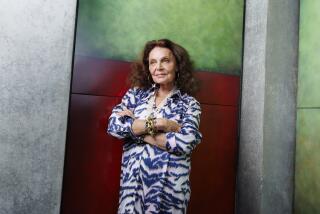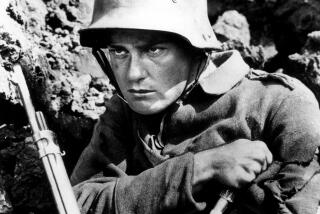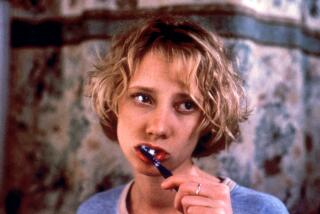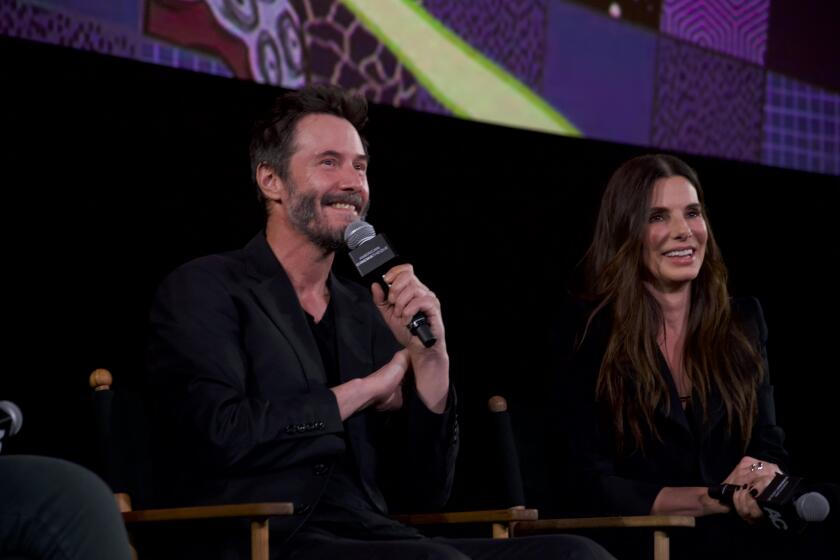FILM : ‘Blue Angel’ Began Dietrich Myth
Although it wasn’t her earliest film, “The Blue Angel” is credited with setting in motion the cultural myth of Marlene Dietrich. American audiences first noticed Dietrich opposite Gary Cooper in “Morocco,” and her native Germany had been charmed for some time, but “The Blue Angel” really started it all.
Ironically, the 1930 movie (screening at the Wilshire Auditorium in Fullerton on Friday night) was tabbed a star vehicle for Emil Jannings, the German actor who had won an Oscar for his performances in “The Way of the Flesh” (1927) and “The Last Command” (1928). But moviegoers were not so much held by Jannings’ portrayal of the doomed Prof. Immanuel Rath as they were by a very young, very plump Dietrich.
Whether singing “Falling In Love Again” in her smoky voice or having Rath jump through hoops of sexual humiliation, she was the essence of female provocation. Dietrich never lost the mystique that came with these first associations.
Dietrich herself never cared much for “The Blue Angel.” In later interviews, she went out of her way to flatten its reputation as a milestone; not one to get showy with language, she said the movie was “enough to make you puke.”
She hated the coarseness of her character, the cabaret femme fatale Lola-Lola, and the film’s debasement of Rath, but it was just the sort of harshly mesmerizing art that fixes in the public’s mind and can make a legend of its most graphic symbol.
It is often hard to stomach. Rath, a vulnerable but pedantic high school teacher, sinks way beyond his own protective self-righteousness after he encounters Lola-Lola. She’s as immune to self-criticism as he is ruled by it. Lola-Lola is all impulse and sensuality; she’s a sexual fantasy made real.
Rath’s unexplored region is his desire, which she reaches in destructive ways. He falls for her too quickly, of course, but this is a movie that doesn’t hesitate in leading Rath to his fate. Director Josef von Sternberg moves the story forward through sharply realized scenes showing the spiraling tawdriness of Lola-Lola and Rath’s relationship.
This film can make you feel voyeuristic, especially by the queasy ending when Rath’s ruin is complete. The famous rooster-crowing scene near the finale puts a man-gone-mad on display. The moment is emotionally over-inflated, but effective nonetheless.
Von Sternberg was said to have become a little obsessed with Dietrich himself during the filming and changed the orientation of Henrich Mann’s novel, “Professor Unrat, the Blue Angel,” to place more emphasis on her. The last scene reflects this as the “The Blue Angel” closes with almost a cinematic afterthought: Lola-Lola is seen on center stage, carelessly singing again, unchanged by what has happened. It’s that image of Dietrich that sticks in your head.
What: Josef von Sternberg’s “The Blue Angel.”
When: Friday, Feb. 15, at 7:30 p.m.
Where: The Wilshire Auditorium, 330 N. Lemon St., Fullerton.
Whereabouts: Take the Riverside (91) Freeway to Lemon Street and head north.
Wherewithal: $4 and $5.
Where to Call: (714) 871-4030, Ext. 15.
More to Read
Only good movies
Get the Indie Focus newsletter, Mark Olsen's weekly guide to the world of cinema.
You may occasionally receive promotional content from the Los Angeles Times.










